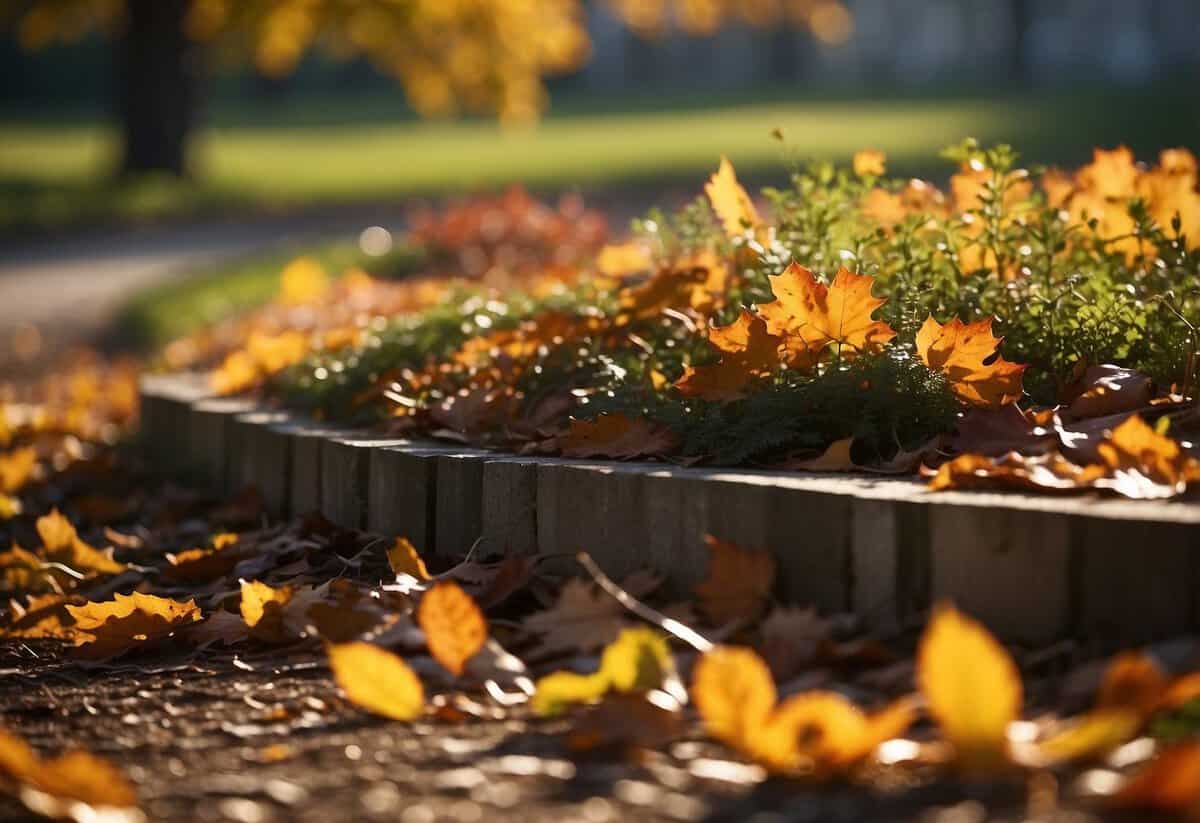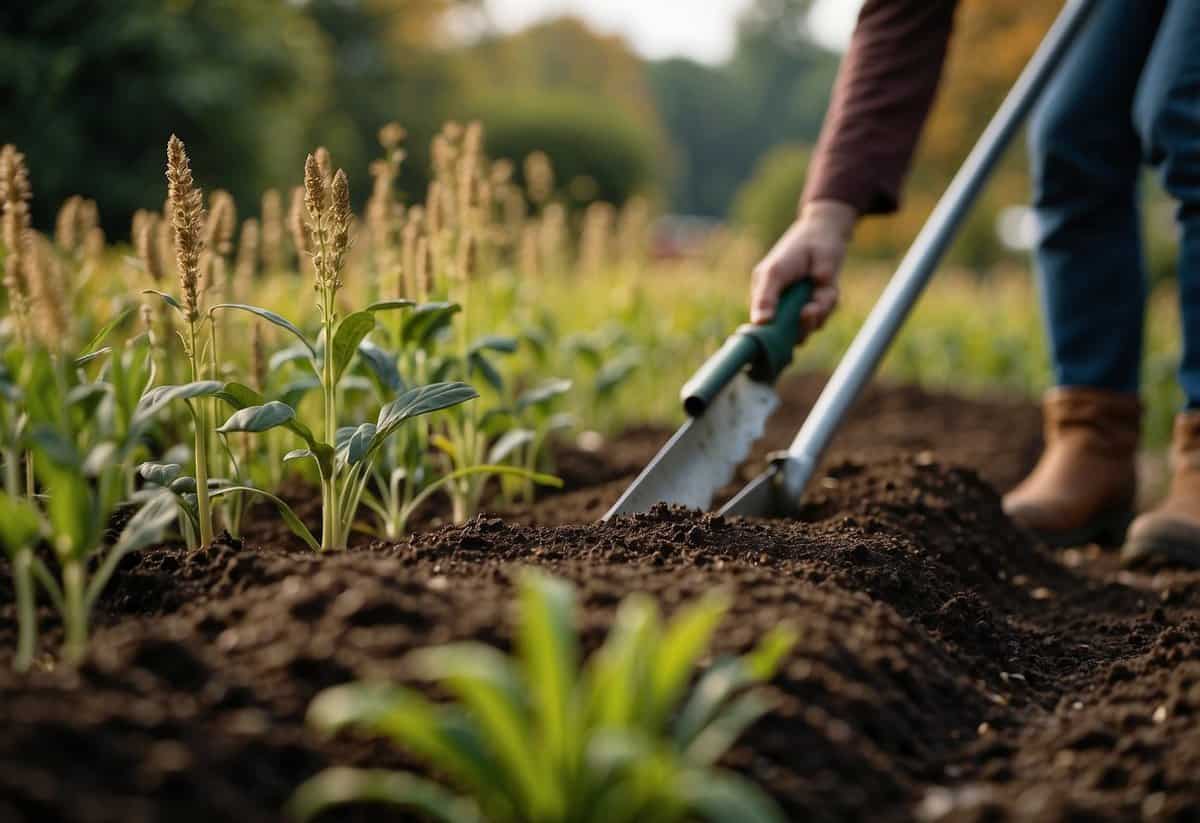October Garden Bed Tips: Prepare and Beautify Your Fall Garden
October is a crucial month for preparing your garden beds for the cooler months ahead. With the right tips and a bit of effort, you can ensure your garden remains healthy and productive throughout the fall and into the winter. You’ll find that taking care of your garden now will make a big difference when spring arrives.

What steps can you take to winterize your garden beds effectively? From cleaning up spent plants to adding the right nutrients, there are several tasks that can help your garden thrive. By focusing on these important tasks, you can set the stage for a successful growing season next year.
1) Mulch Application

Applying mulch to your garden beds in October is a great way to prepare for the colder months. Start by clearing any weeds from the area.
Spread a 2-3 inch layer of mulch over the soil. This helps retain moisture and protects your plants’ roots from the cold.
Avoid piling mulch against the stems or trunks. This can cause rot and harm your plants.
Using mulch will help keep your garden healthy and beautiful through the winter.
2) Choosing the Right Perennials

When selecting perennials for your October garden, it’s important to think about their bloom time and hardiness. Some perennials like Allium can be planted in October and will bloom beautifully in spring.
Consider perennials that are hardy and long-lived. Flowers like salvias and Monardas are known for their durability and vibrant blooms. These choices can ensure your garden looks great for years to come.
Spacing is key for perennial plants. Proper spacing helps them grow healthily and prevents overcrowding. Make sure to follow the planting recommendations for each species.
3) Soil Testing

October is a great time for soil testing. Start by picking spots around your garden bed and dig down 6-10 inches. Place this soil in a bucket. Repeat this step 10 to 15 times, taking samples from different areas.
Mix the soil well and remove debris like rocks. Scoop out 2 cups for testing. Use a home test kit to check pH and nutrient levels. For more tips, visit Growing in the Garden’s guide.
4) Planting Cover Crops

Planting cover crops in October is a great way to protect and improve your garden soil.
Choose fast-growing plants like legumes or grasses. Examples include annual ryegrass, oats, and winter rye.
Clear the garden bed of any debris before seeding. Sow the seeds evenly and gently rake the soil to cover them.
If you want more detailed planting tips, check out these cover crop planting tips.
5) Pruning Perennials

You should prune your perennials in October to keep your garden looking neat. Grab a hand pruner and some rubbing alcohol to sanitize your tools.
Cut the plants back to about 1 to 2 inches above the ground. This helps them grow better next season. Removing dead parts also prevents disease.
Thinning out the stems can improve the appearance and health of your plants. Aim to remove up to one-third of the overcrowded stems to give your perennials more space to thrive.
6) Composting Leaves

Composting leaves is a great way to recycle your yard waste. Start by raking up the fallen leaves and gathering them in a pile.
For best results, mix 4-5 parts leaves to one part green waste like grass clippings or kitchen scraps. This balance helps speed up the composting process.
To boost decay, you can add a compost accelerator or just turn the pile 1-2 times a week.
7) Setting Up Cold Frames

Setting up cold frames helps extend your growing season. They are simple structures that protect plants from cold weather.
To get started, place your cold frame in a sunny spot. This will maximize light and heat.
You can paint the inside walls white or use aluminum foil to reflect more light onto your plants. Add a few black-painted water jugs to capture extra heat.
8) Weed Control

Taking control of weeds in your garden bed is crucial in October. Start by applying a layer of mulch. Mulch, which can be wood chips or straw, helps block light and reduce weed growth.
You can also cover your garden beds with cardboard or black landscaping fabric. This smothers weeds and stops them from sprouting. Also, remove weeds when the soil is moist. This makes it easier to pull them out by the roots. Make sure to pull weeds before they flower and set seeds.
9) Winterizing Irrigation Systems

As colder weather approaches, it’s important to protect your irrigation system from freezing.
Start by shutting off the water supply to prevent new water from entering the system. Drain the water from the main line by opening the valve and letting it flow out.
Use an air compressor to blow out any remaining water in the lines. This prevents the water from freezing and causing damage to the pipes.
10) Planting Spring Bulbs

October is a great time to plant spring bulbs. You’ll want to pick a spot that gets at least six hours of direct sunlight each day. This helps your bulbs get the energy they need to grow strong and bloom beautifully.
Make sure the soil is well-drained. Add some compost or organic matter to the soil to boost its nutrients.
After planting, give the bulbs a good soak and cover them with mulch. This will help retain moisture and protect them from the cold.
For more details, check out these tips for planting bulbs.
Preparing Your Garden Bed

For a healthy garden bed, you will need to focus on soil renovation and proper fertilizing techniques. These steps ensure your garden soil remains rich and fertile, ready for planting.
Soil Renovation
Start by clearing the area of weeds, rocks, and debris. Use a garden hoe or rake for this task. Once clear, it’s crucial to test your soil. This can be done using a simple soil test kit from any garden store. The test will tell you about the soil’s pH levels and nutrient content.
If the soil is compacted, loosen it using a garden fork or tiller. Aim to dig 8-10 inches deep. This depth ensures plant roots grow strong and deep, giving them better access to water and nutrients.
After loosening the soil, mix in some compost. Compost improves soil structure, increases water retention, and adds essential nutrients. Spread a 2-3 inch layer of compost on top of your soil and work it in thoroughly.
Fertilizing Techniques
Apply a high-nitrogen fertilizer before planting. This type of fertilizer supports leafy growth, which is crucial for many vegetables. Follow the package instructions for the correct application rate.
Consider using organic fertilizers like bone meal or fish emulsion. These can provide phosphorus and potassium, which are essential for root and flower development. Bone meal is especially good for bulbs and root crops.
For a balanced nutrient mix, you may also want to use a slow-release fertilizer. These fertilizers break down slowly, feeding plants over time without overwhelming them.
When applying any fertilizer, make sure to water it in well. This helps the nutrients penetrate the soil and become available to plants.
Planting and Maintenance

In October, focus on planting and maintaining your garden beds to ensure they are ready for the coming months. Pay attention to selecting plants that thrive in cooler weather, follow a proper watering schedule, and control weeds effectively.
Selecting October Plants
October is a great time to plant cool-season vegetables and flowers. Choose plants like broccoli, cabbage, and kale that can withstand frost. For flowers, consider pansies and chrysanthemums as they can handle the cooler temperatures. Also, plant spring-blooming bulbs such as tulips and daffodils now.
Vegetables to Plant:
- Broccoli
- Cabbage
- Kale
Flowers to Plant:
- Pansies
- Chrysanthemums
Bulbs to Plant:
- Tulips
- Daffodils
Make sure to space plants properly to prevent overcrowding and encourage healthy growth.
Watering Schedule
Watering your garden in October requires some adjustments due to cooler temperatures. Water deeply and less frequently, ensuring the soil remains moist but not waterlogged. Early morning is the best time to water to avoid fungus and other issues.
Tips for Watering:
- Water deeply and less often
- Aim for early morning watering
- Avoid watering leaves to prevent disease
Keep an eye on rainfall. Reduce manual watering if you receive enough rain, but ensure your garden doesn’t dry out completely.
Weed Control
Controlling weeds in October is essential for a healthy garden. Remove weeds regularly to prevent them from taking over. Mulching is an effective way to suppress weeds and retain moisture in the soil.
Weed Control Tips:
- Pull weeds by hand frequently
- Use mulch around plants
- Consider using landscape fabric in larger areas
By staying on top of weeds now, you can reduce the number of weeds you’ll need to deal with in the spring. Use these tips to keep your garden beds healthy and ready for the next growing season.







